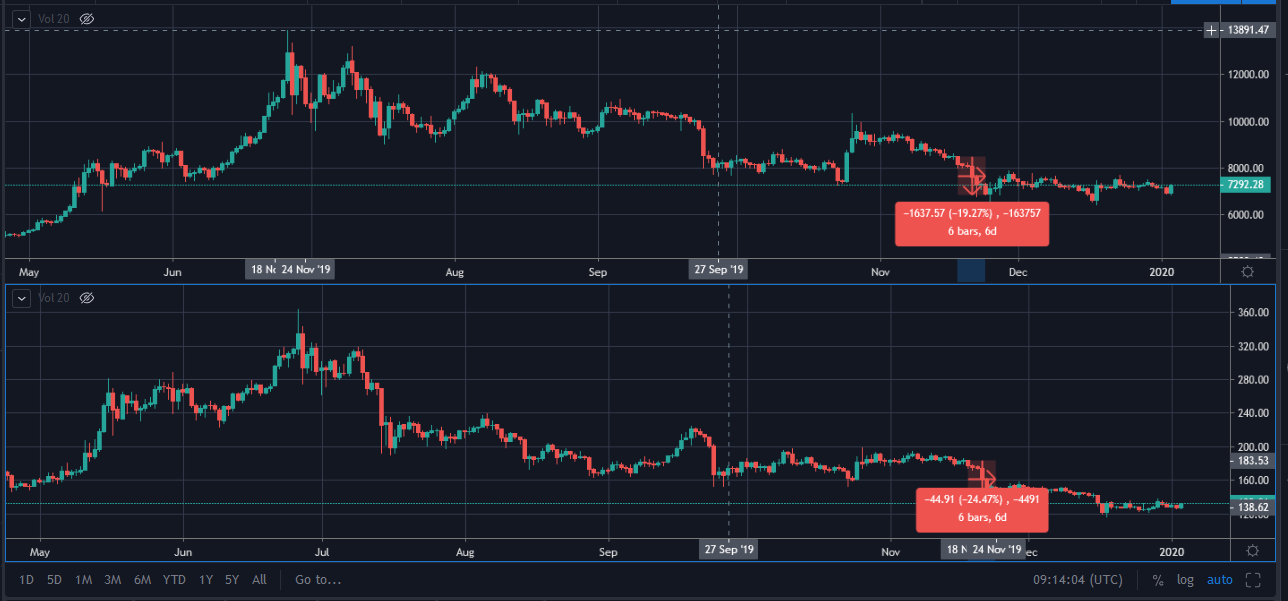Bitcoin and Ethereum recorded a lucrative first half in 2019, with many in the crypto-community attributing the performance of the market to the performance of these cryptos.
The second half of 2019 was far less exciting for the market, however, as both cryptos registered massive losses. In fact, Ethereum ended the year with a 2.09 percent negative return.
Bitcoin managed to incur a 90 percent overall profit but dropped over 85 percent from its year to date high. A particularly interesting correlation observed over the last six months of 2019 was ETH-BTC volatility.
In November 2019, ETH volatility was a better trade option than BTC volatility since it was less volatile than BTC. At that moment, it was completely unusual as the ETH-BTC realized volatility spread registered a negative spread of 13 percent.
The declining volatility was also observed in December as ETH’s price continued to drop consistently. On 27 December 2019, an ETH Call was made, one equivalent to around $28,000, highlighting that people expected the price to go higher over the next few months.

Source: TradingView
However, the price movement may indirectly depend on Bitcoin’s movement.
Over the last 6 months, the correlation index between Bitcoin and Ethereum has been extremely high with 84 percent. In fact, in December 2019, the correlation was close to 89 percent.
The aforementioned statistics can be verified by the similar market movement pictured by Ethereum whenever Bitcoin underwent a pump. On 18 December for instance, Bitcoin pumped by over 16 percent. Ethereum followed suit with a 15 percent hike.
On the other hand, Bitcoin dipped by about 19 percent from 18 November to 22 November and Ethereum suffered a 26 percent crash over the same time frame.
Skew analytics recently indicated that Ether volatility had been predominantly controlled with BTC volatility. The possibility of further control can be expected with the previous market scenario as Ethereum has failed to register a single independent pump or dump.
